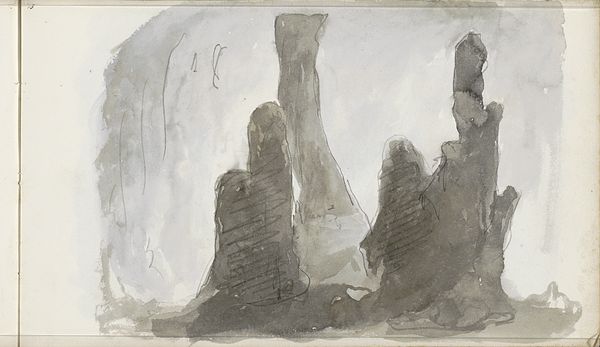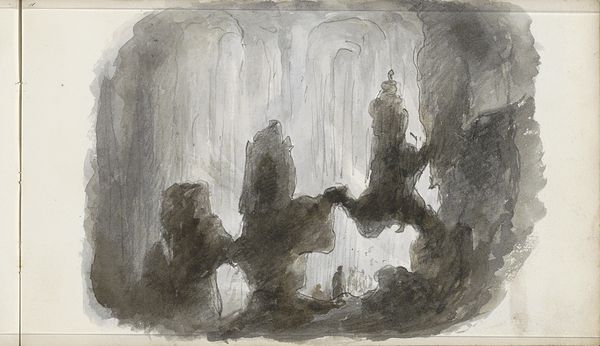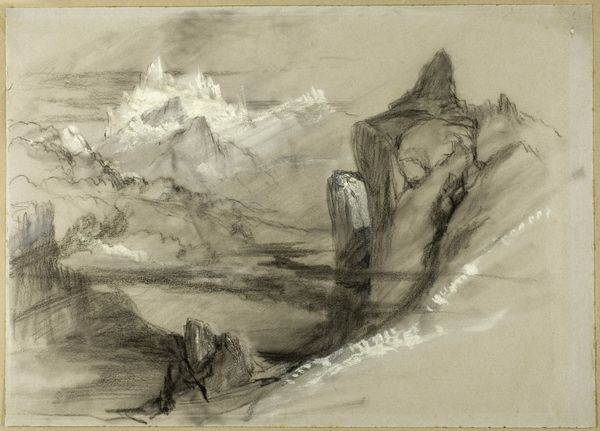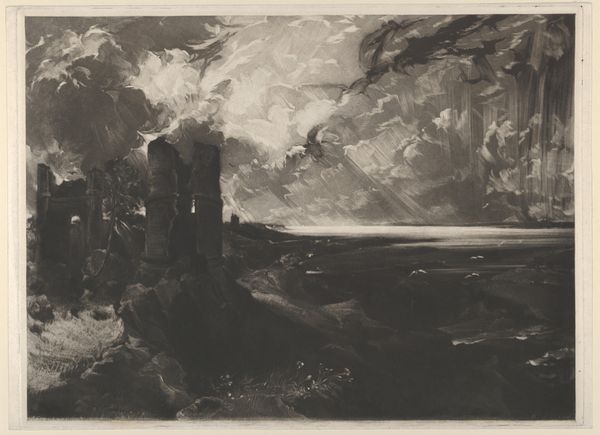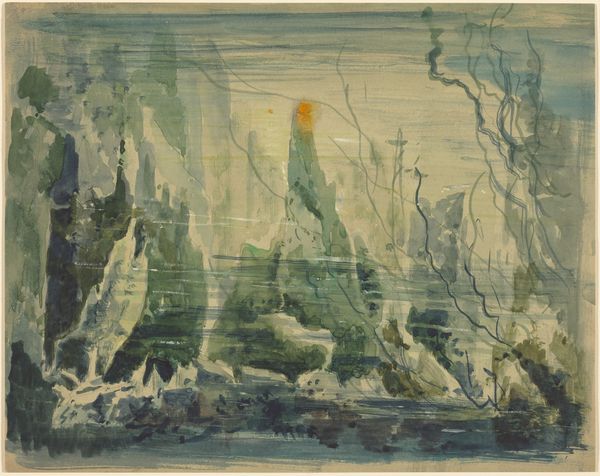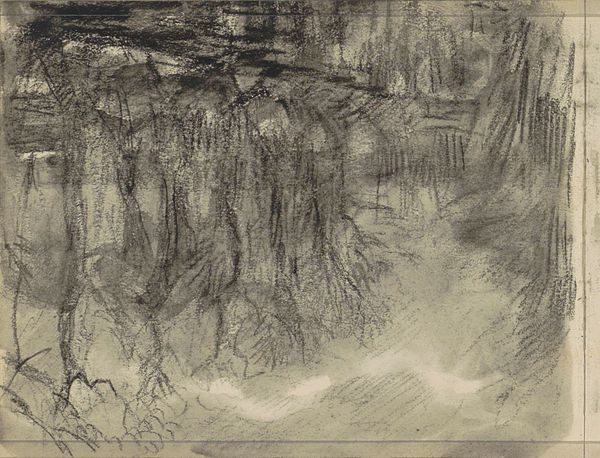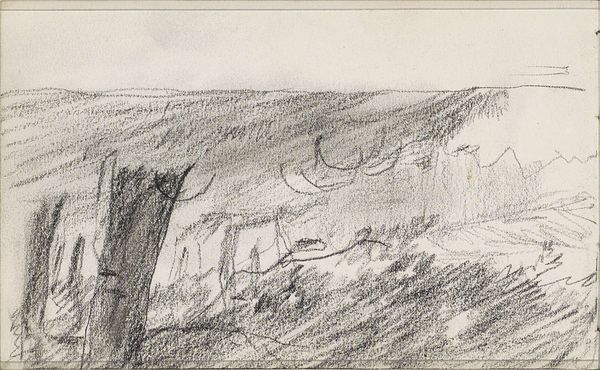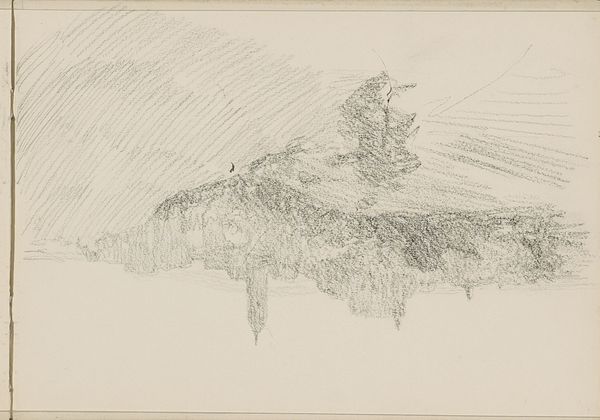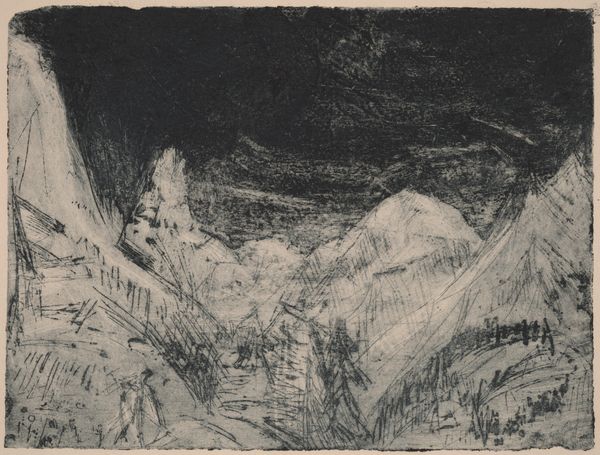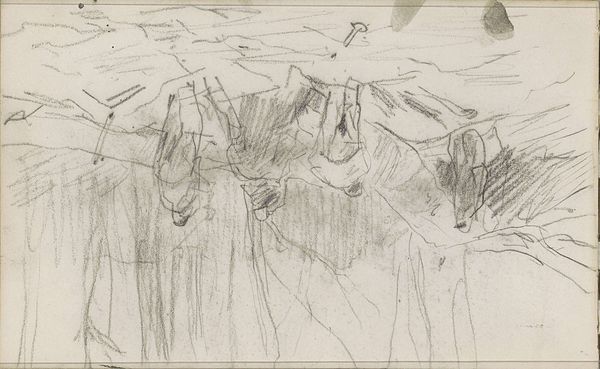
drawing, paper, watercolor, ink
#
drawing
#
landscape
#
paper
#
watercolor
#
ink
#
watercolor
#
realism
Copyright: Rijks Museum: Open Domain
Editor: This is Petrus Johannes Schotel’s “Druipsteengrot,” made sometime between 1841 and 1865, using ink, watercolor and pencil on paper. It's quite stark, all in grey tones. What do you see in this piece beyond the simple depiction of a cave? Curator: Beyond the immediate representation, I see the lingering impact of Romanticism. This was a period fascinated with the sublimity of nature, especially places untouched by human intervention. Consider the rise of tourism and the scientific exploration of natural wonders like caves. This work subtly positions the viewer as an explorer, but an explorer conditioned to expect, even to *demand*, awe. Does that resonate with you? Editor: Definitely. It makes me wonder who this artwork was originally intended for, beyond the artist himself. Curator: Precisely! Consider that in the 19th century, such imagery would have served various purposes: scientific documentation, artistic studies, and even souvenirs for a growing middle class eager to consume and display "authentic" experiences of the natural world. The Rijksmuseum's acquisition speaks to its enduring significance in representing a particular chapter in our cultural engagement with nature. Think of how many cave paintings predate even this era! Editor: It’s interesting how a seemingly straightforward landscape drawing can tell such a complex story about how we perceive and value nature, then and now. I’ll definitely look at other landscapes differently from now on. Curator: Indeed, even what seems like a simple choice of subject reflects evolving cultural priorities and artistic intentions. Thanks for noticing!
Comments
No comments
Be the first to comment and join the conversation on the ultimate creative platform.
